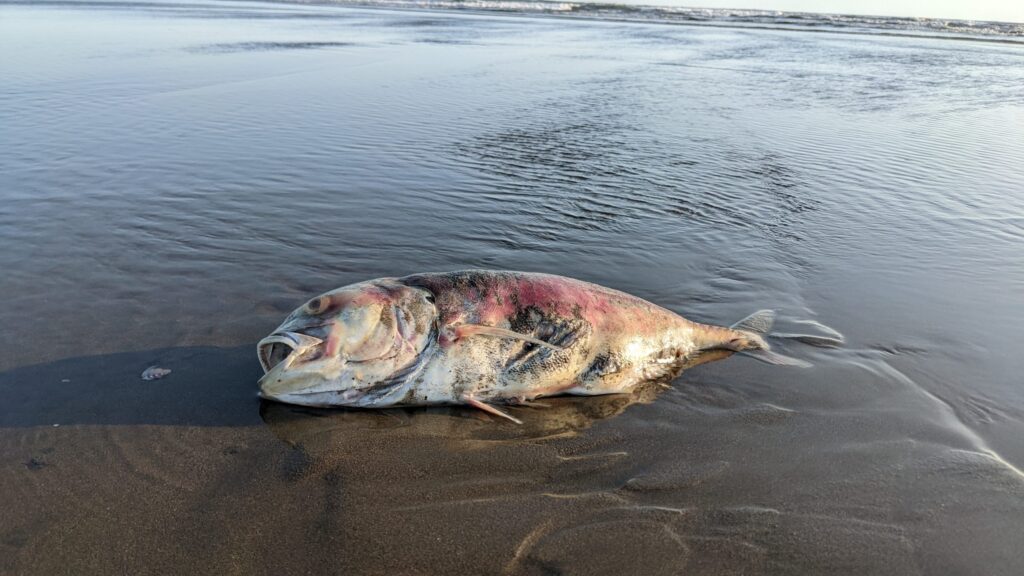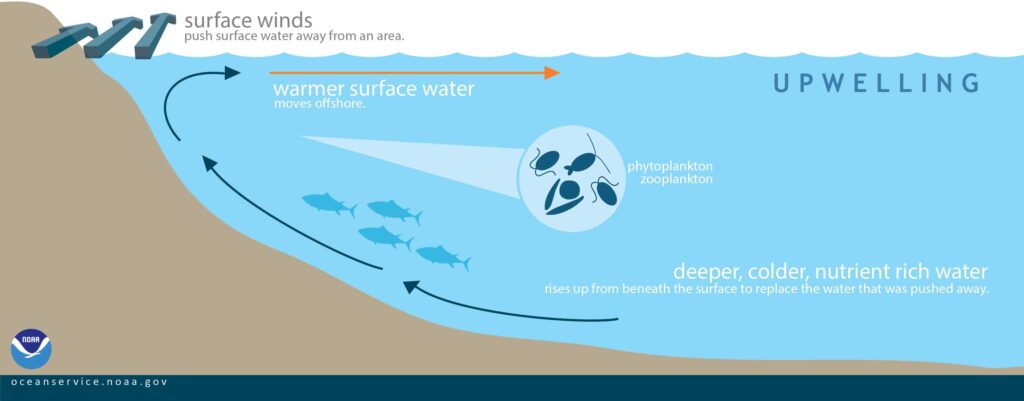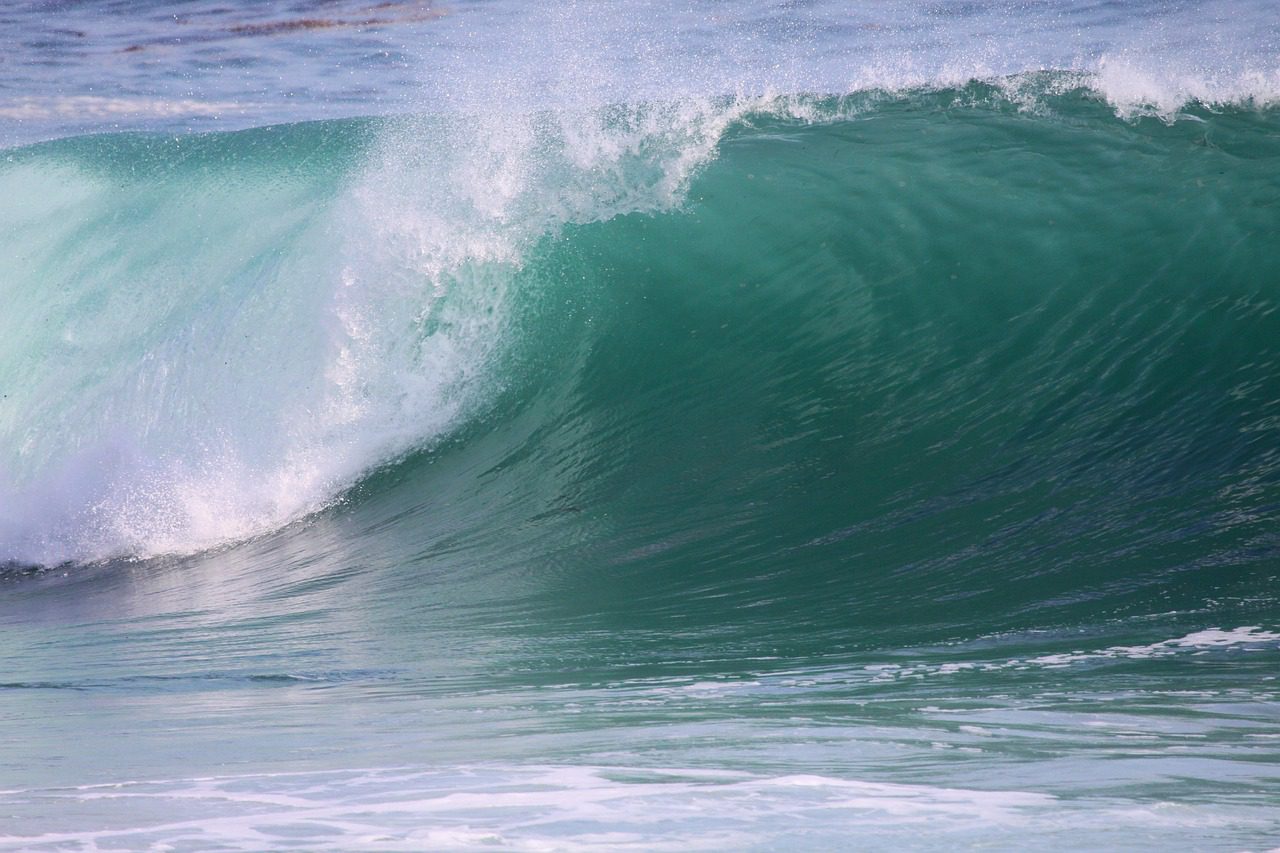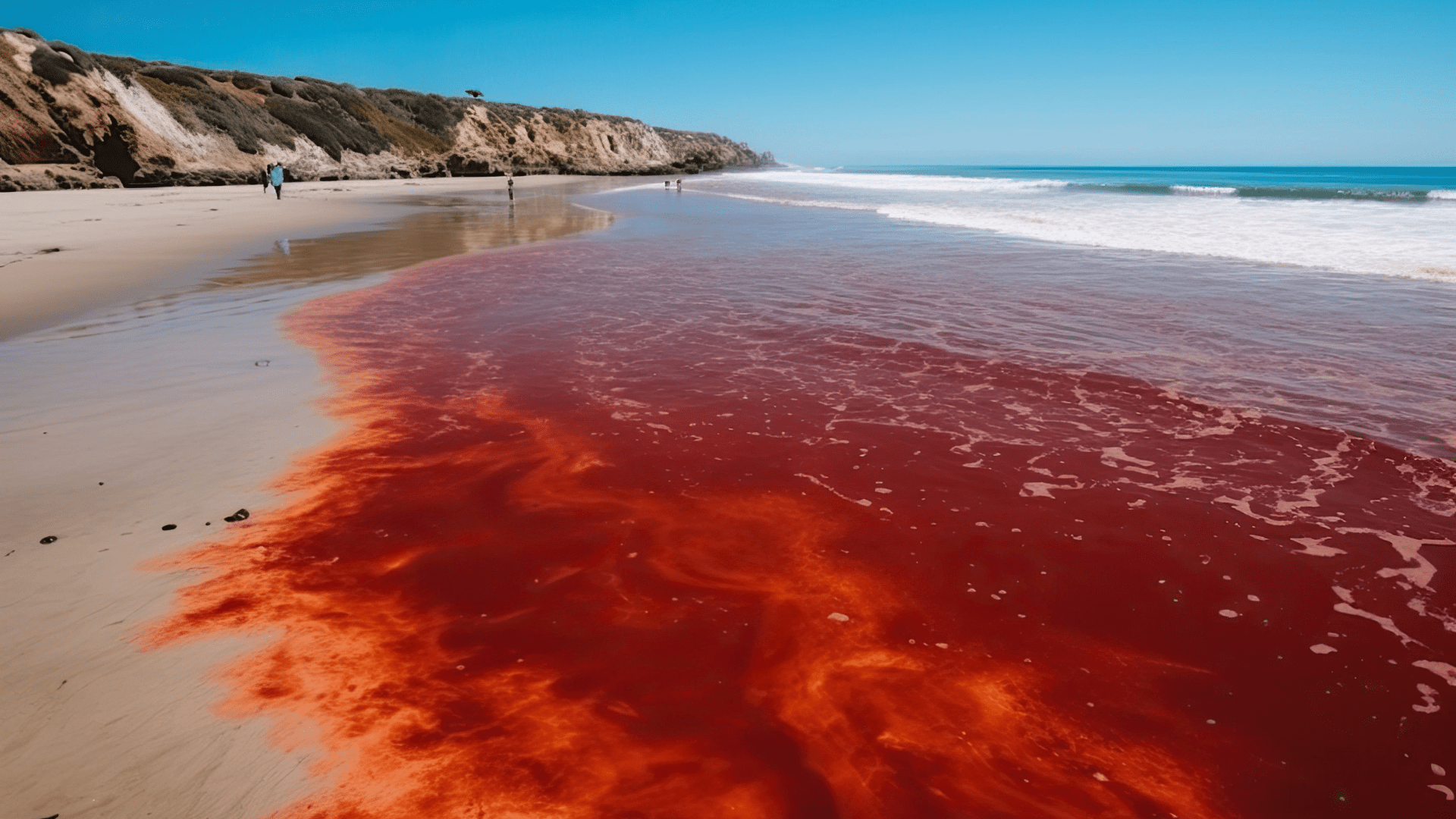Wyatt Sloan, our Summer 2023 Beach Cleanup Intern, writes about Harmful Algal Blooms in San Diego County.
Toxic algae blooms are harming marine life up and down the coast of California. In recent months, it has been more apparent in San Diego County waters. With rising ocean temperatures, we are seeing a rise in the number of occurrences of algae blooms in Southern California. The number of events is only expected to increase through the summer and fall and into the future. These algae blooms, often called Red Tides due to the reddish color, can also be harmful – producing a neurotoxin, Domoic Acid, which is known to affect sea life and humans alike.


What is Algae, and Why Does it Bloom?
Algae is a group of predominantly aquatic and photosynthetic organisms. These organisms can be single-cellular to multicellular, inhabit various ecosystems, and bloom under various conditions. Along our coast, blooms tend to occur during times of upwelling – when water from the ocean’s depths rises, bringing nutrient-rich water to the surface. This high influx of nutrients, mixed with warmer surface waters, leads to algae blooms on the surface. We mainly see these algae blooms during the transitional periods in the fall and spring when upwelling is starting up or slowing down. With rising ocean temperatures due to climate change, we are seeing an increase in upwelling, leading to a significant increase in harmful algae blooms in San Diego County.


Domoic Acid
The most predominant harmful algae in Southern California coastal waters is Pseudo-nitzschia, which produces the toxin Domoic Acid. Domoic Acid is a neurotoxin that marine mammals, coastal birds, fish, and humans. Small fish, shellfish, and other tiny aquatic organisms are directly affected by Pseudo-nitzschia blooms; however, sea birds, marine mammals, and humans can experience Domoic Acid poisoning by ingesting affected organisms. Domoic Acid poisoning is known to lead to significant neurological complications, including disorientation, seizures, or even death. However, with the help of new medication, the standard course of Domoic Acid toxicity can be slowed or entirely halted.
What can we do about HABs?
Currently, there is no way to stop harmful algae blooms from occurring. As Scripps Institution of Oceanography, Professor William Gerwick states, “We’re at the whim of the phenomena of the sea; we can’t mitigate it.” However, understanding algal bloom processes, environmental cues, and how climate change continues to affect our planet will help us better understand these blooms and help us predict when and where one might occur to inform the public and prepare for the impending effects.
Learn More About Harmful Algal Blooms
NOAA- What is a harmful algal bloom
CDC- HABs and illnesses
NPS- Harmful Algal Blooms Factsheet
EPA- Nutrient Pollution- Harmful Algal Blooms














